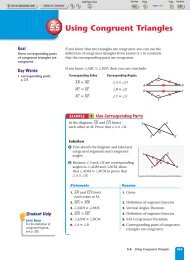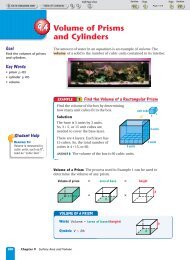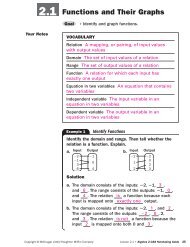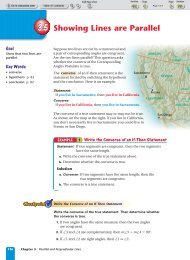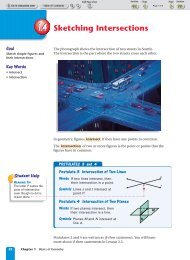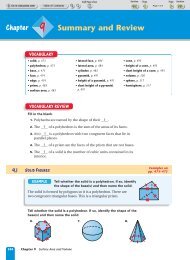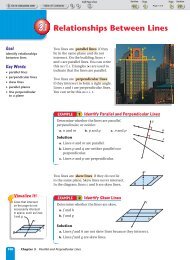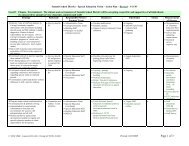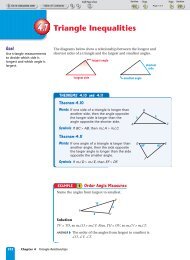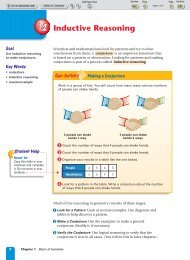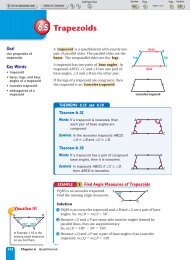6.3 Showing Quadrilaterals are Parallelograms
6.3 Showing Quadrilaterals are Parallelograms
6.3 Showing Quadrilaterals are Parallelograms
Create successful ePaper yourself
Turn your PDF publications into a flip-book with our unique Google optimized e-Paper software.
318 Chapter 6 <strong>Quadrilaterals</strong><br />
EXAMPLE 3 Use Consecutive Angles<br />
Tell whether the quadrilateral is a parallelogram. Explain your<br />
reasoning.<br />
a. U<br />
V b. E F c.<br />
95<br />
85<br />
125<br />
T<br />
85<br />
Solution<br />
W<br />
120 55<br />
H G<br />
B C<br />
A D<br />
a. aU is supplementary to aT and aV (8595180). So, by<br />
Theorem 6.8, TUVW is a parallelogram.<br />
b. aG is supplementary to aF (55125180), but aG is not<br />
supplementary to aH (55120180). So, EFGH is not a<br />
parallelogram.<br />
c. aD is supplementary to aC (9090180), but you <strong>are</strong> not<br />
given any information about aA or aB. Therefore, you cannot<br />
conclude that ABCD is a parallelogram.<br />
THEOREM 6.9<br />
Words If the diagonals of a quadrilateral<br />
bisect each other, then the<br />
quadrilateral is a parallelogram.<br />
Symbols If QM&* cMS &*** and PM &** c MR &**,<br />
then PQRS is a parallelogram.<br />
EXAMPLE 4 Use Diagonals<br />
Tell whether the quadrilateral is a parallelogram. Explain your<br />
reasoning.<br />
a. b.<br />
J K<br />
19<br />
18 19<br />
M L<br />
Solution<br />
18<br />
a. The diagonals of JKLM bisect each other. So, by Theorem 6.9,<br />
JKLM is a parallelogram.<br />
b. The diagonals of PQRS do not bisect each other. So, PQRS is<br />
not a parallelogram.<br />
S<br />
P<br />
P<br />
4<br />
2<br />
P<br />
3<br />
3<br />
R<br />
M<br />
P<br />
S<br />
R




